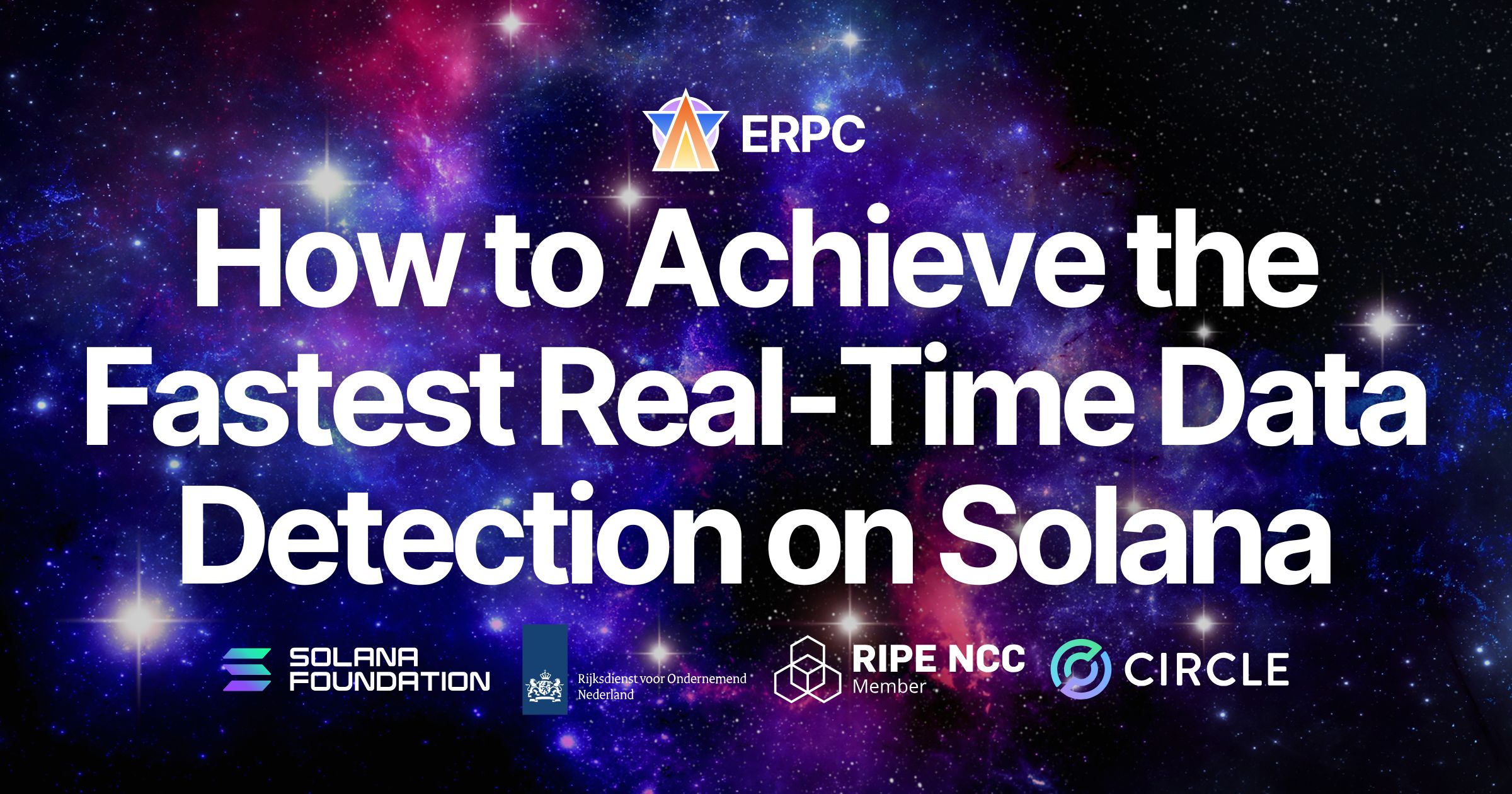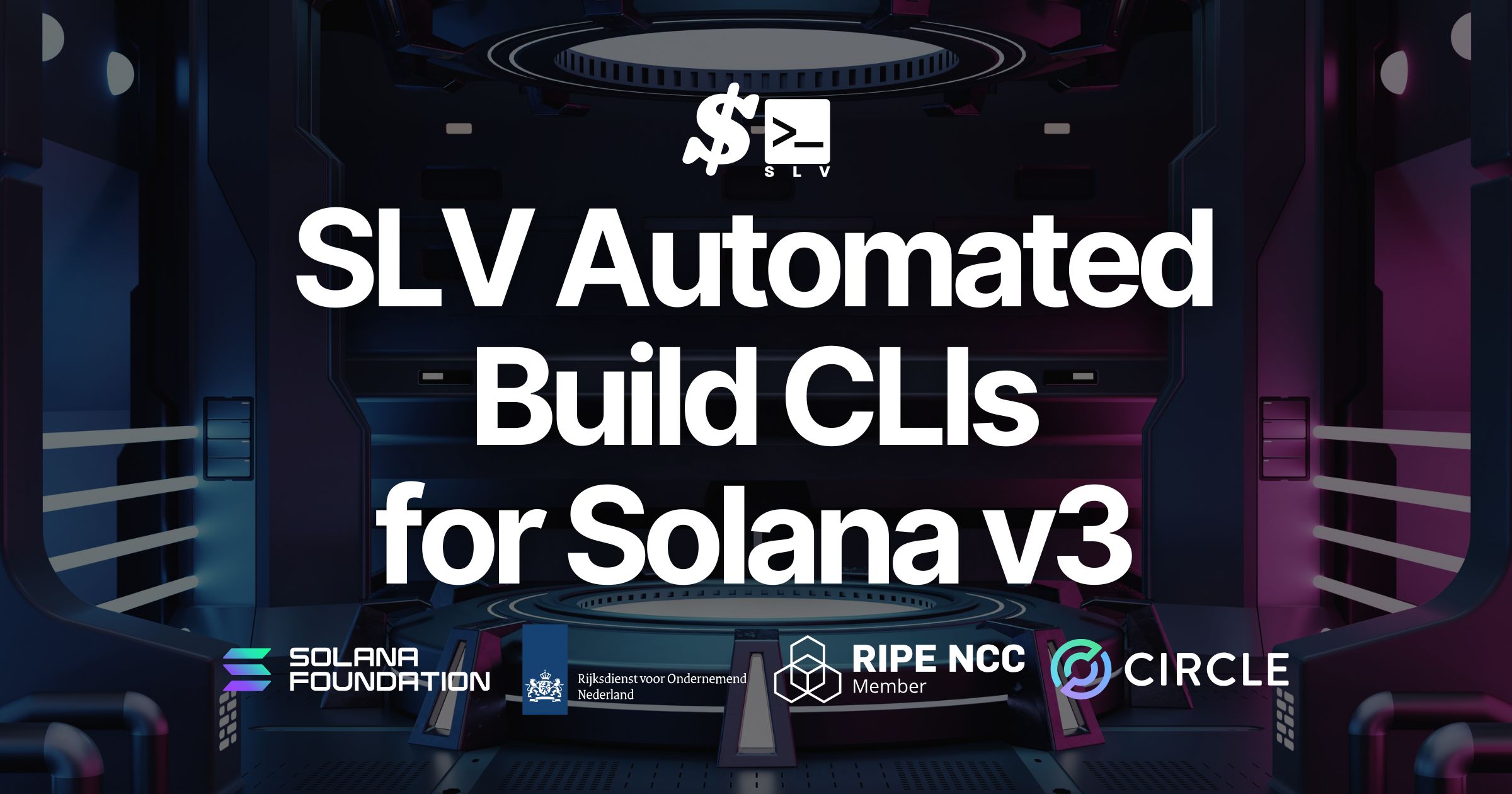ERPC Completes Amsterdam Region VPS Performance Upgrade for Solana — Achieving High-Efficiency Virtualization with 5th Gen EPYC
ERPC Completes Amsterdam Region VPS Performance Upgrade for Solana — Achieving High-Efficiency Virtualization with 5th Gen EPYC
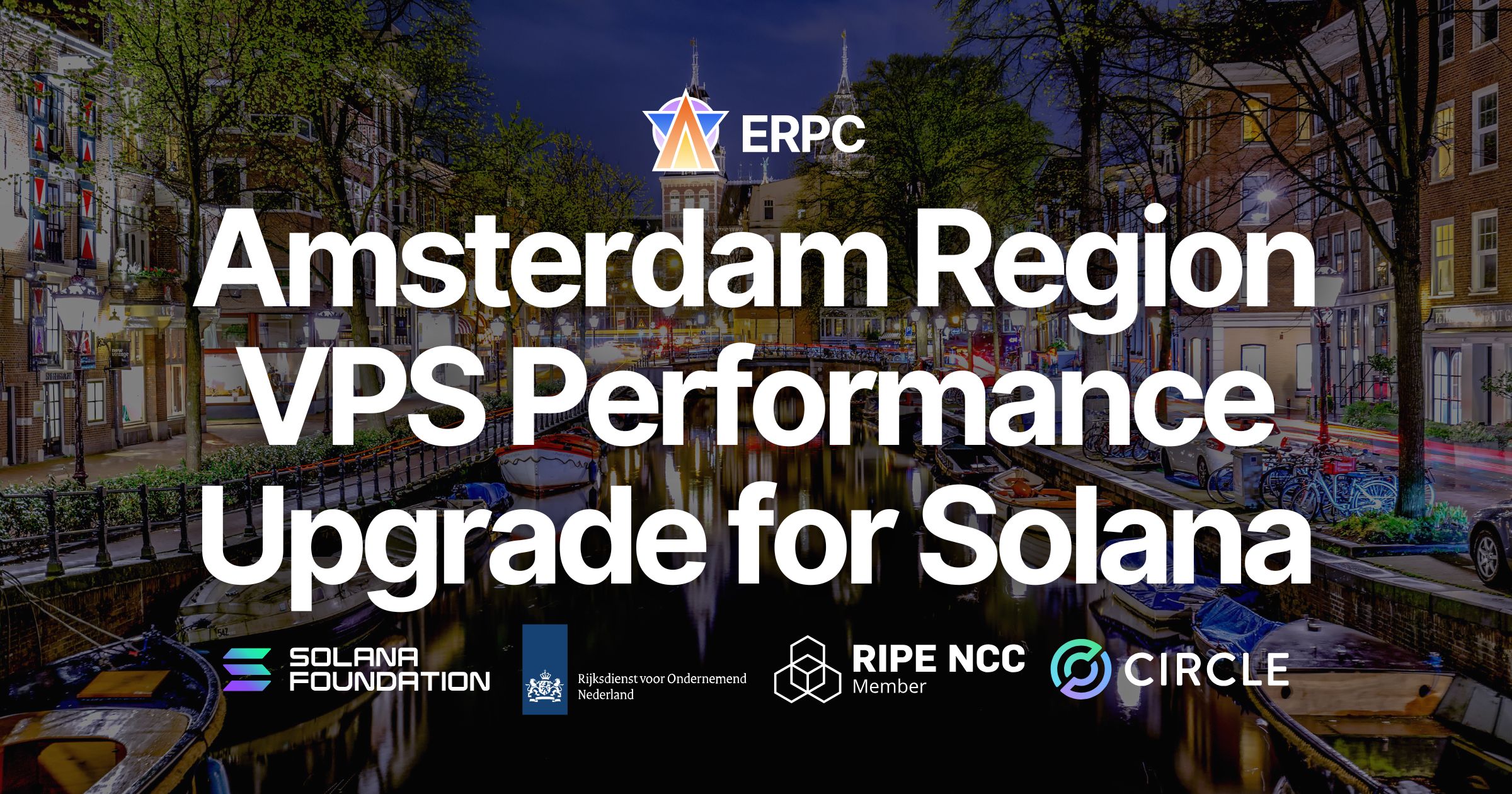
ELSOUL LABO B.V. (Headquarters: Amsterdam, the Netherlands; CEO: Fumitake Kawasaki) and Validators DAO have announced the completion of a major performance upgrade for Solana-oriented VPS products in the Amsterdam region.
This update is part of ERPC’s previously announced global VPS upgrade initiative and is expected to deliver an average performance improvement of 10–25% across all plans.
High-Efficiency Virtualization with 5th Generation EPYC
The Amsterdam region is among the first to adopt AMD’s latest 5th generation EPYC CPUs. The EPYC series is architected for high-performance virtualization, featuring a large number of memory channels and extremely low virtualization overhead. ERPC avoids excessive virtualization layers, enabling each CPU core to deliver its maximum effective performance.
This design allows multiple cores to efficiently share the same cache, improving data reuse and overall consistency in access patterns.
These improvements significantly enhance responsiveness in workloads that make heavy use of CPU caching, such as Solana RPC, gRPC, Shredstream, and Indexer applications. In certain workloads, the Amsterdam EPYC VPS lineup can even outperform Ryzen-based VPS models.
Overhauled Virtualization Layer, Storage Control, and CPU Allocation
The latest upgrade refines CPU allocation, memory access, and storage I/O control to optimize system balance and maintain performance even under simultaneous multi-I/O workloads. As a result, the environment offers faster and more stable responsiveness specifically tuned for Solana-related applications.
VPS Product Lineup
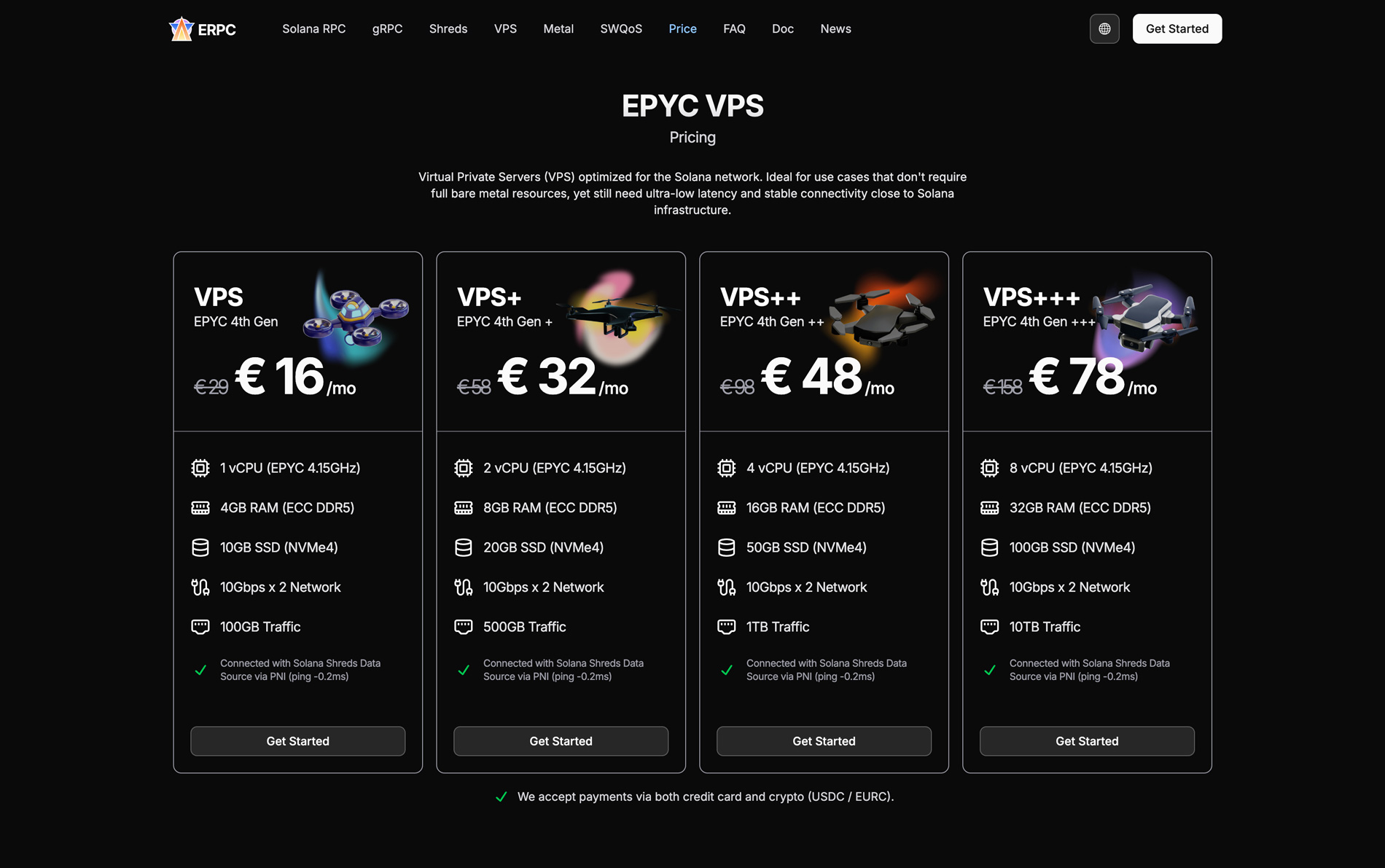
All VPS models in the Amsterdam region have now been upgraded. Each plan has been redesigned at both the hardware and virtualization levels to provide consistent, stable performance. This enhancement is especially effective for latency-sensitive use cases such as Solana RPC, gRPC, Indexer, and trading applications.
Solana RPC Bundle Plan
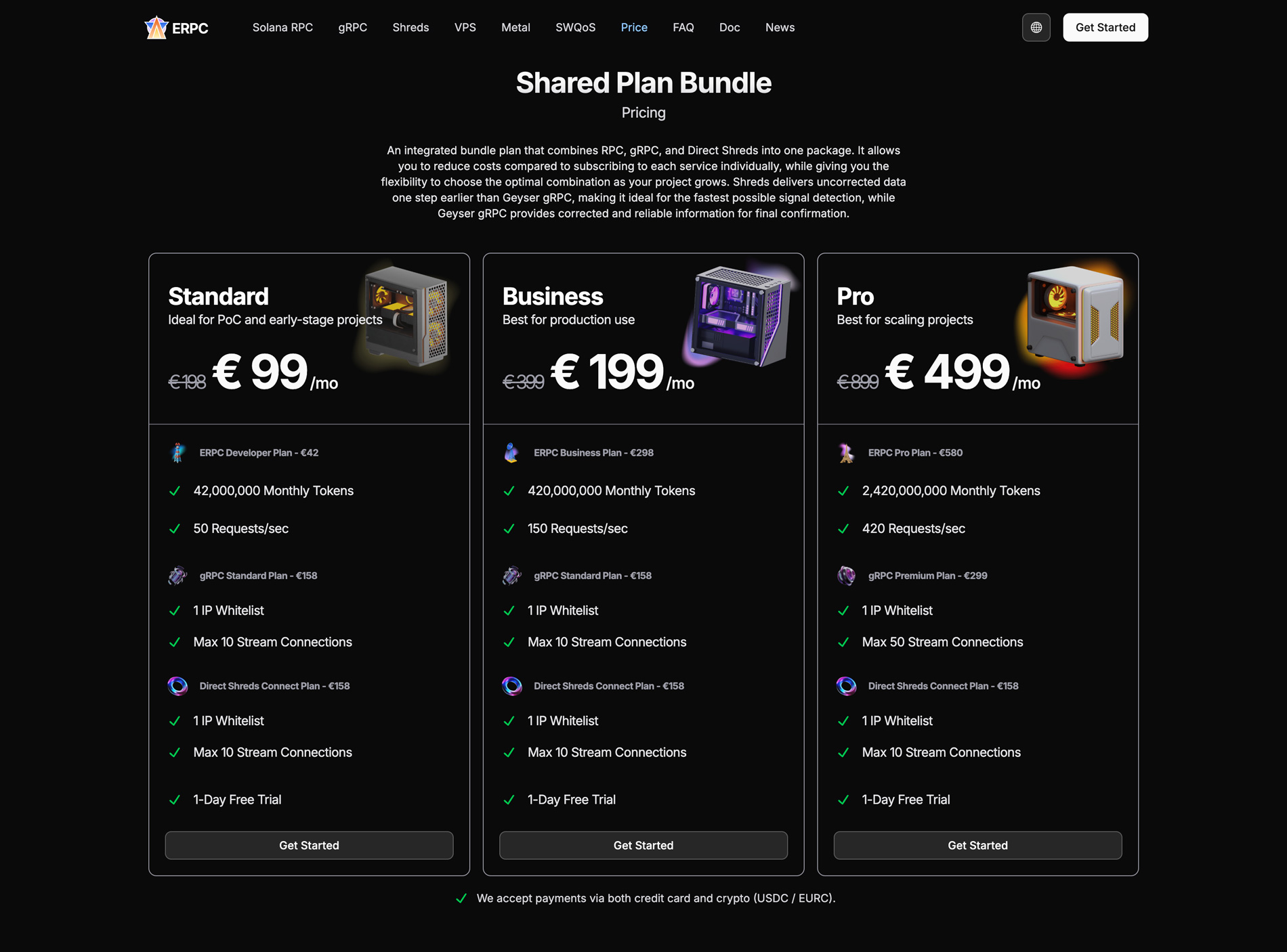
The Bundle Plan integrates HTTP, WebSocket, gRPC, and Shredstream into a single unified package. It enables developers to transition between or combine multiple communication modes within one contract, offering flexible testing and deployment capabilities. The plan has become the standard configuration adopted by many major Solana projects for production environments.
Stream Bundle Plan
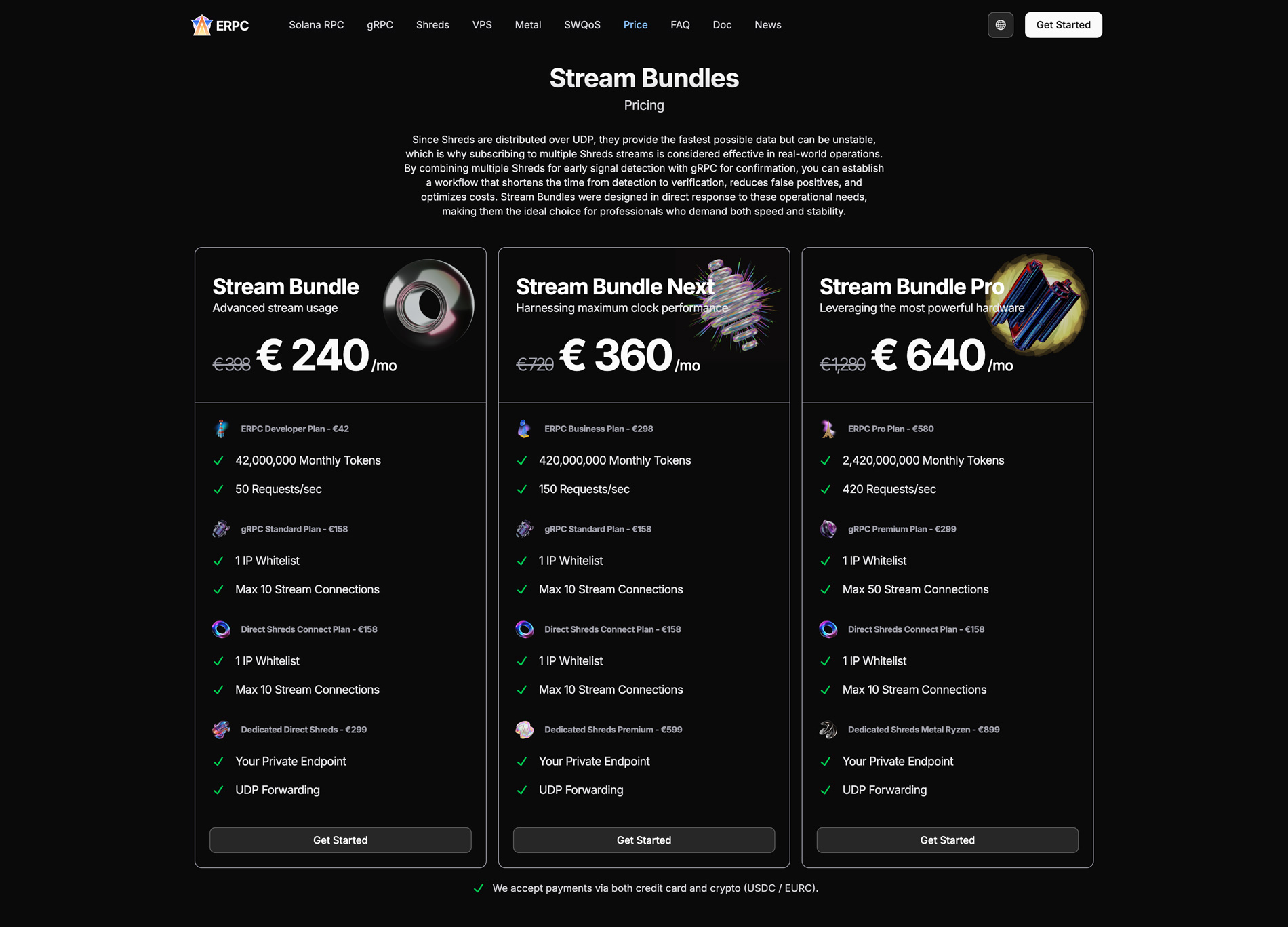
The Stream Bundle Plan utilizes the fastest communication protocol, UDP, to directly handle Shreds data streams. UDP provides unmatched speed, making it ideal for Solana’s ultra-fast data propagation layer.
While Shreds can occasionally contain missing fragments by design, Stream Bundle mitigates this through shared Shreds redundancy and Geyser gRPC-based data completion. This hybrid approach maintains both real-time responsiveness and data completeness, providing the best balance of speed and reliability. With every communication layer included, the Stream Bundle Plan delivers the highest cost performance and remains ERPC’s most popular configuration.
Next Steps
The Amsterdam performance upgrade marks the first phase of ERPC’s region-wide optimization rollout. The same performance improvements will be progressively applied to other regions in the coming weeks.
All VPS and Stream Bundle plans are available for order through the official Validators DAO Discord.
- Validators DAO Discord: https://discord.gg/C7ZQSrCkYR
Challenges Addressed by ERPC and Validators DAO
- Transaction failures and latency variations common in RPC environments
- Performance throttling by generic infrastructure providers
- The strong impact of physical network distance on communication quality
- The difficulty for smaller projects to access high-performance infrastructure
During the development of the open-source Solana NFT card game project Epics DAO, we encountered the lack of fast, reliable Solana-optimized infrastructure available to developers. To solve this, we built our own stack — the foundation for ERPC and SLV.
In financial and trading applications, latency and errors directly impact user experience. The decentralized nature of Solana, combined with complex validator-to-RPC interactions, makes maintaining stable latency a significant challenge.
Our goal is to provide high-performance, developer-friendly infrastructure that enhances both developer and end-user experiences across the entire Solana ecosystem. Both ERPC and SLV are integral parts of this effort.
- ERPC Official: https://erpc.global/en
- SLV Official: https://slv.dev/en
- elSOL Official: https://elsol.app/en
- Epics DAO Official: https://epics.dev/en
- Validators DAO Discord: https://discord.gg/C7ZQSrCkYR


